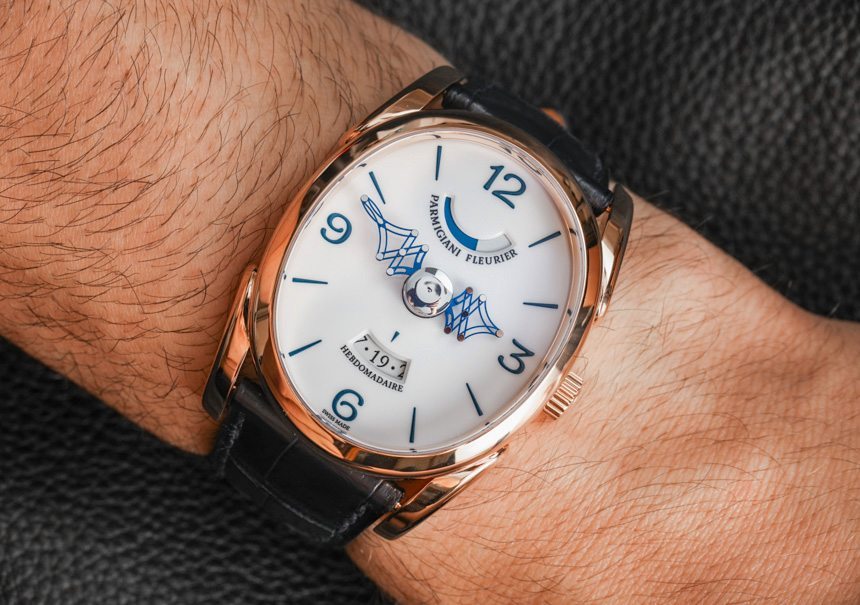
Watches like the Parmigiani Ovale Pantographe come along only once in a rare while. This is a timepiece myself and others on the aBlogtoWatch team have been more or less smitten with for years… given its mixture of fantastic design, historical roots, and emotionally charged technical fascination. Of course, a niche-appeal timepiece such as this isn’t for all tastes, but if you are sympathetic to what the Parmigiani Ovale Pantographe does well, then I think you’ll agree this is really some special watch.
The modern history of the Parmigiani Ovale Pantographe dates back to 2011 when Parmigiani debuted a concept called the Parmigaini 114 (here on aBlogtoWatch). As you can see, the resulting timepiece we have today is very similar to what the brand had in mind back then. Later, in 2013, Parmigiani released a limited edition version of the Ovale Pantographe with a textured dial. Sometime subsequent to that, the brand released two non-limited editions of the Ovale Pantographe in both 18k rose and 18k white gold that aBlogtoWatch went hands-on with here. Finally, I get a chance to review one of those watches (the Ovale Pantographe in 18k rose gold), which helps complete my appreciation of this uniquely wonderful timepiece.
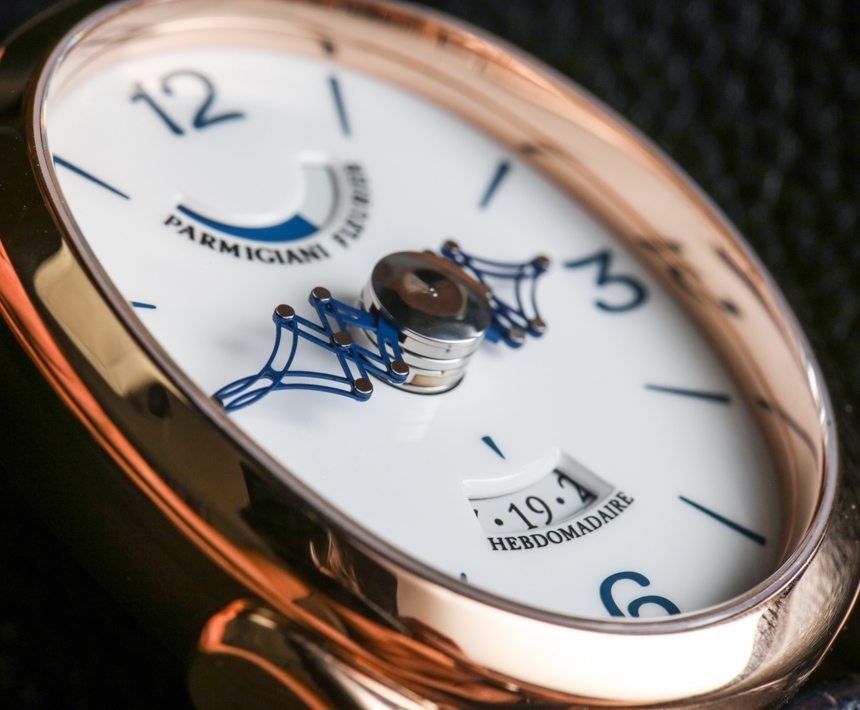
Let’s begin by talking about names and titles. The “Ovale” part of the name clearly refers to the oval-shaped case, and pantographe is a French term for a type of telescopic arm that was invented back in the 17th century. If you dissect the term, it begins to make more sense given that pantographe devices were originally used to produce duplicate writing or drawings. The user would hold a pen in one hand, and the device would more or less trace the motion of the pen on a separate piece of paper. This was a very early form of a copy machine. Going back to the term “pantographe,” It literally means “copy writing,” as “panto” means “mimic” (think “pantomime”), and of course, “graph” means to “write” or “draw.”
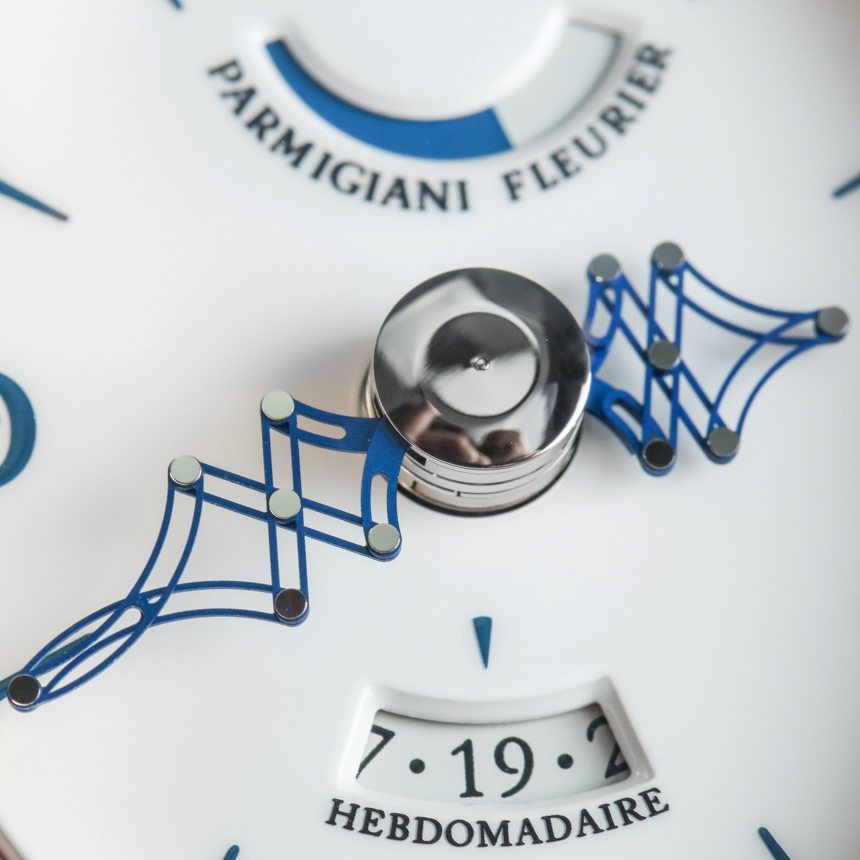
As applied to the Parmigiani Ovale Pantographe watch, the hands on the watch are telescopic, and while they aren’t mimicking something else, the idea is that they mimic the shape of the case. Despite the fact that the case is not round, the hour and minute hands adjust themselves to the shape of the case as they move around the elliptical dial. I also want to mention the odd-sounding (to me) term “Hebdomadaire,” which is printed under the date window. This is a French term that means “weekly” and refers to the fact that the movement has just over one week of power reserve. I agree that placing the term under the power reserve indicator might have made the meaning a bit more clear, but going with aesthetics and symmetry, the term works well where it is on the dial.
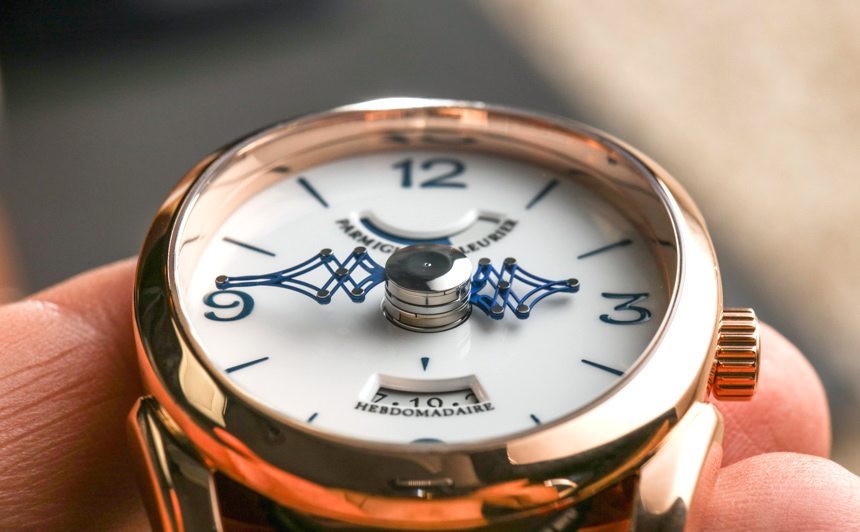
Parmigaini does not take credit for inventing this system of telescopic hands, but they do have much more modern experience with the system than anyone else around. In 1997, Mr. Michel Parmigiani set out to restore an antique pocket watch reportedly produced around the year 1800 by Jardon & Stedmann in Switzerland – which is still owned by the brand. The pocket watch was particularly beautiful and also features an oval-shaped case with gold telescopic hands. Relatively speaking, the Jardon & Stedmann pocket watch is a brilliant example of historic watchmaking, and a sign that form as well as function was an extremely important part of fine watch making even back then. It was really not until the late 19th century that timepieces became “purely utilitarian” as the price of production began to lower. I say this as a preemptive response to people who simply don’t understand the technical whimsy that is often designed into high-end timepieces of this ilk.
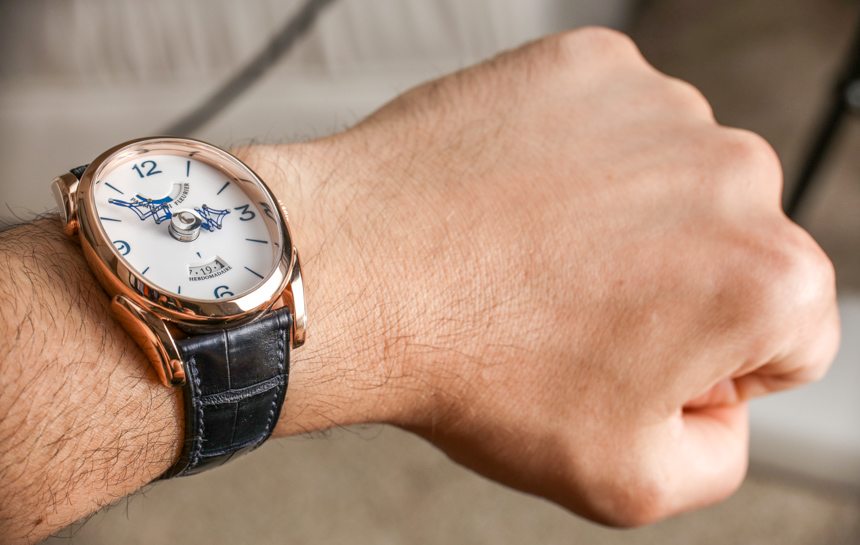
It is unclear when Parmigiani decided to produce a modern version of the oval pocket watch with telescopic hands that Mr. Parmigiani himself restored in the late 1990s – though I am glad that they did. Immensely complex, using a sophisticated cam system where the hands meet in order to regulate their length, the Parmigiani Ovale Pantographe is nevertheless a visual delicacy that even a child can appreciate. This – for me – is one of the timepieces greatest achievements, in that anyone upon a moment’s glance can appreciate what the timepiece does, and why it does it.
No one has any idea how Jardon & Stedmann designed their original pocket watch over 200 years ago, but Parmigiani more recently recruited the aid of copious computer-aided design and engineering to produce the system which controls the hands. A close look at the dial reveals the stacked elements that comprise the cam system where the hands meet on the dial, as well as the delicate and precise pieces used to construct the hands.
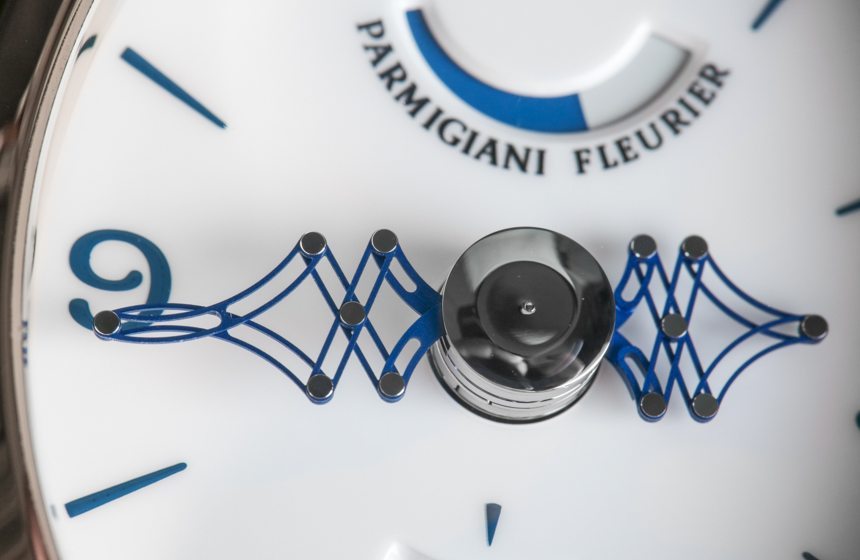
Parmigiani uses blued titanium for the telescopic hand parts given the light weight and strength of the metal. No, you don’t have things like luminant on the dial, but you do have an excellent compromise between the unique design of the hands and legibility against the white lacquered dial. Blue-colored hour markers in distinctive Parmigiani style complete a classic, handsome, and very readable face design.
